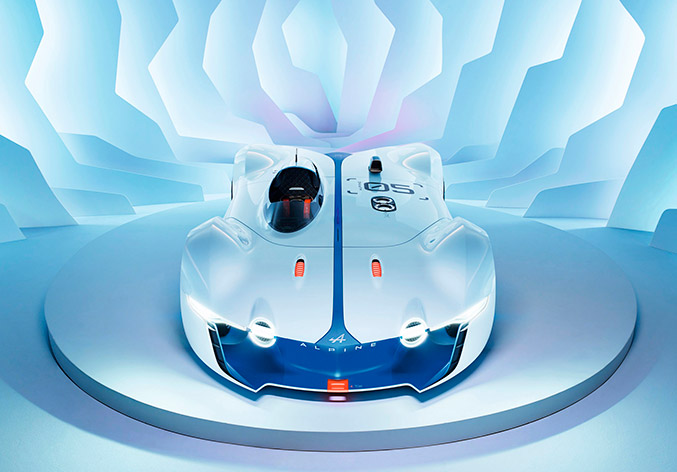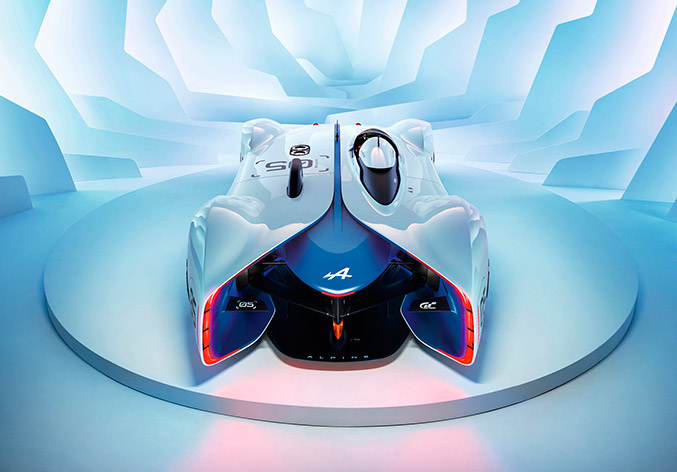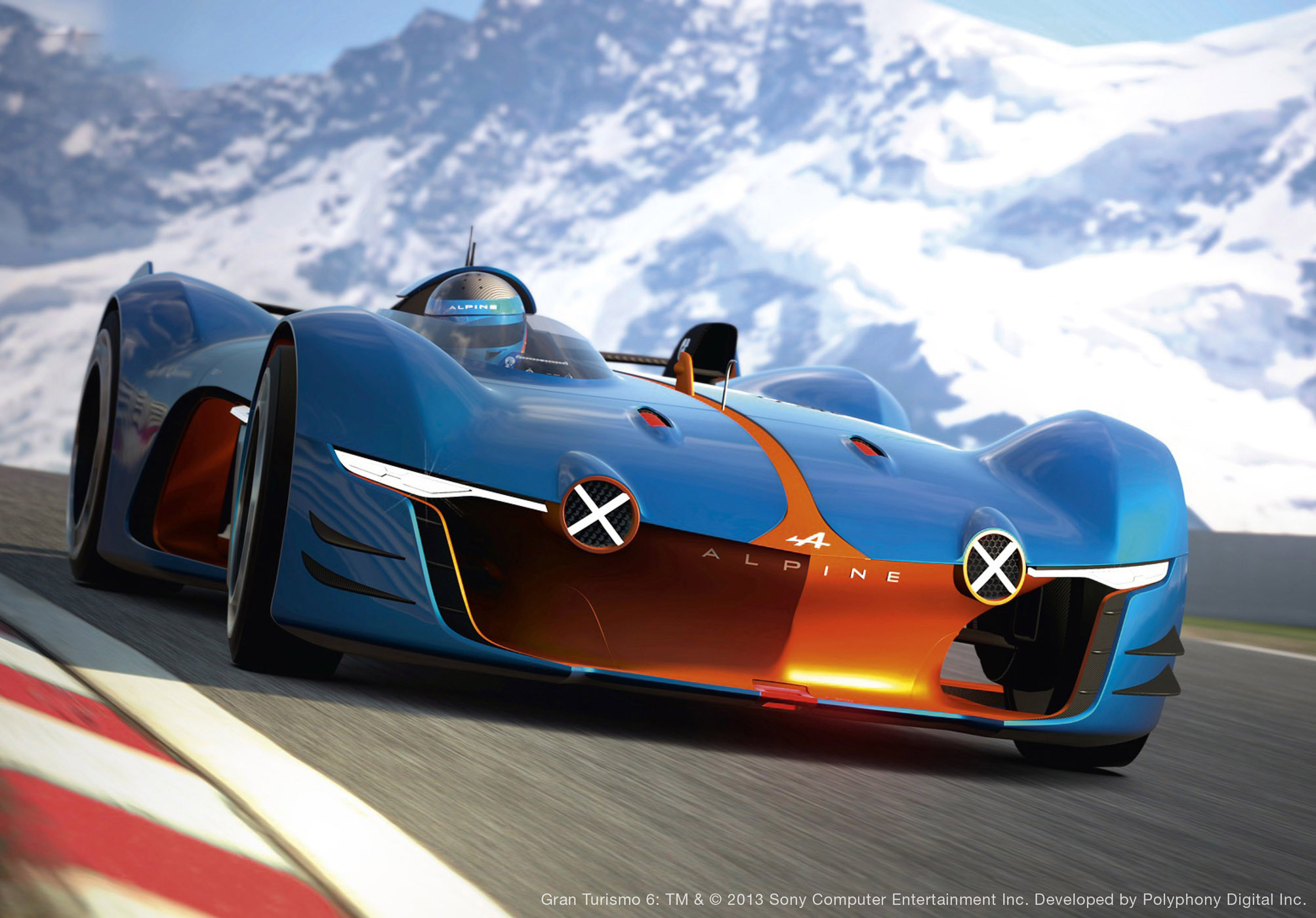 The Alpine of the 21st Century is creeping gradually closer. The wait may seem interminable to the more impatient fans, but at least there is plenty going on in the meantime!
The Alpine of the 21st Century is creeping gradually closer. The wait may seem interminable to the more impatient fans, but at least there is plenty going on in the meantime!
In motor racing, for example, the Alpine A450 prototype collected European endurance racing titles in 2013 and 2014, as well as a podium finish in the LM P2 class in last June’s Le Mans 24 Hours.
Now, as the brand’s 60th anniversary festivities get under way, the Alpine Vision Gran Turismo heralds a new chapter in the make’s revival. Polyphony Digital Inc. – developers of PlayStation®’s Gran Turismo game – proposed the challenge of creating a new ‘virtual’ car in July 2013 and the teams at Alpine turned their attention to the project with the same passion, enthusiasm and rigour as they are committing to the upcoming new road car.
Passion – a driving force
Before going into the design of the Alpine Vision Gran Turismo in more detail, it is perhaps an idea to go back more than 15 years when Sony recruited the Japanese economics student, Kazunori Yamauchi. ‘Kaz’ was an ambitious and visionary young man whose skill and passion as a game producer persuaded Sony to allow him to create his dream, five-years in the making – the ultimate driving simulator. Taking advantage of the technological breakthrough that was the PlayStation console, Polyphony Digital produced an immediate hit with the launch of Gran Turismo on 11th December, 1999. It revolutionised the video game industry with sales of the first title reaching more than 11 million copies.
More than fifteen years later, the success story continues. Sales of the various iterations of Gran Turismo totalled more than 72 million before Gran Turismo®6 for PlayStation®3 was released in December 2014. Gran Turismo®6 stands out as a new benchmark and features over 1,200 of the world’s best cars and 39 tracks. The success of the franchise is due in great part to the partnerships its producers have sealed with the most prestigious carmakers. Grouped under the Vision Gran Turismo banner for the game’s 15th anniversary, the prototype cars that have been created especially for the occasion are eagerly awaited by car and video game enthusiasts alike.

A spectacular rear-end design
While the brief submitted to the designers was, well, brief, it included one specific stipulation in comparison with their usual creations. The key focuses of the concept car needed to be the rear end and the cockpit, simply because they are the most popular views in motor sport video games.
Even so, our tour begins with the front of the car, which bears a striking resemblance to the A110. The sloping V-shaped bonnet is enhanced by a central crease and, in another nod to the 1960s, the cross-shaped LED lights recall the black tape that was used to protect the additional lights fitted to the Berlinette rally cars. These references to the past blend in seamlessly with an undeniably modern aerodynamic package that includes a splitter designed to channel airflow along the body sides. It also provides a glimpse of the suspension wishbones. Openings in the bonnet expose the orange struts which are located horizontally at the top of the chassis.
The car’s profile awakens other memories. Large air intakes direct the flow that escapes behind the front wheels and accentuate the narrow form of the body. Complementing the overall harmony, the long lateral rear fins call to mind the A210s and A220s which shone so brilliantly at Le Mans, achieving victory in the 24-hour race’s Efficiency Index class in 1966.
The wheels alone are eloquent of the fusion of present and past. The design of the rims – inspired by those fitted to the A110s – is sufficiently open to reveal the impressive brake callipers, painted in orange or blue, depending on the version.
The appeal of the Alpine Vision Gran Turismo is further enhanced by its open cockpit. The driver sits on the right, a design typical of sport-prototype cars given that the majority of circuits – not least of which Le Mans – run in a clockwise direction.
The roll cage is stylishly integrated, as is the engine air intake duct on the left-hand side. A butterfly door facilitates access, enabling the driver to slide on board. When it opens, it is possible to glimpse a little more of the work that has been carried out. The visible stitching of the leather seat is redolent of the famous cross pattern, complete with blue thread that brings a modern feel. The almost rectangular steering wheel, of the sort seen on the endurance racing prototypes, is crowned by digital instruments. Indispensable in fast-and-frenetic races, the rear view mirrors have been replaced by a high-definition camera.
The rear-end design represents an unmistakeable highlight of the Alpine Vision Gran Turismo. The flat bottom that runs beneath the car terminates in arched form, while a lower wing links the wheel arches to the stern. As at the front, the bodywork exposes the double wishbone suspension. A second, beautifully integrated wing yields even more aerodynamic downforce.
The most striking characteristics of the Alpine Vision Gran Turismo become apparent under braking. Integrated into the profile of the tail, the hydraulically-activated airbrakes can be deployed in an instant, while at the same time revealing the brake lights!
Gran Turismo allows players to choose between three personalised colours:
- White and blue: this elegant, understated livery is also the colour scheme chosen for the full-scale model of the car
- Orange and blue: inspired by the Alpine A450, two-time European Endurance Champion
- Matt black: in true gamer style
Source: Renault
Previous article
Infiniti QX70 LR3 – Wide Body from AHG-Sports



